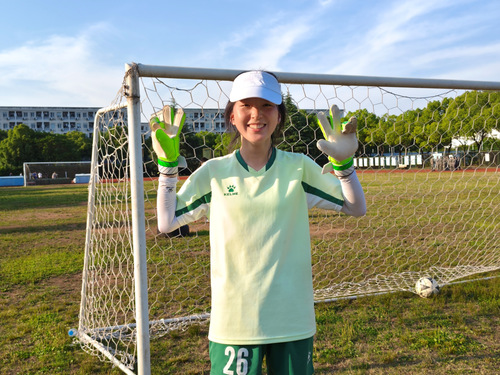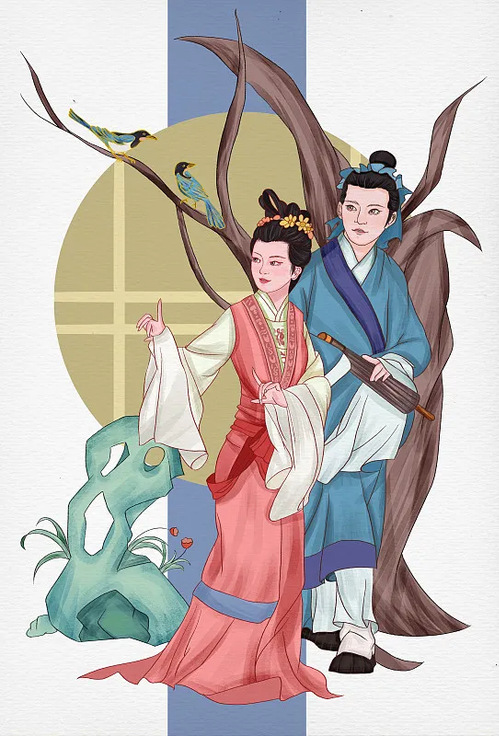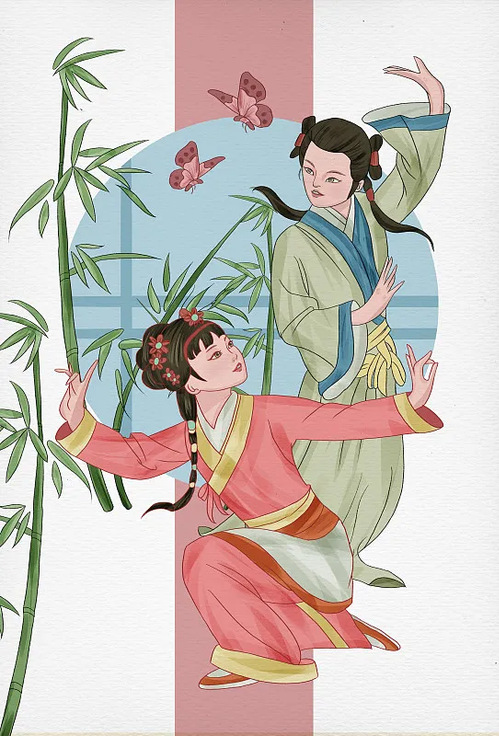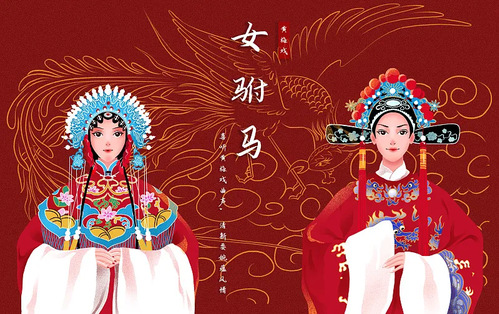黄梅戏是中国传统戏曲的重要分支,起源于安徽省黄梅县,以其优美的旋律、质朴的表演和贴近生活的语言风格闻名。其历史可追溯至清朝中期,最初以民间小调形式流传于安徽、湖北一带,后逐渐发展为成熟的戏剧形式。2006年,黄梅戏被列入国家级非物质文化遗产名录,成为中华文化宝库中的璀璨明珠。
本期让我们跟随英语2401班黄欣儿同学的脚步,走进黄梅戏的婉转唱腔与动人故事。

蒲公“英”说书人
大家好,我是来自英语2401班的黄欣儿,我喜欢踢足球,画画,烘培,游泳。参加过新生口语比赛,是校足球队的一员。


原文
Huangmei Opera is a form of traditional Chinese opera originating from Huangmei County, Anhui Province. It is one of the key regional operas in China, and it first emerged during the mid-Qing Dynasty. Initially popular in Anhui and Hubei provinces, Huangmei Opera is known for its refreshing and melodic tunes, simple performance style, and relatable language, making it particularly loved by people in the Jianghuai region and its surrounding areas.
Huangmei Opera began as a folk singing style,with the early form called“Huangmei tune,which featured folk melodies and simple music.Over time,it evolved into a more structured theatrical form, incorporating elements of other regional operas.After hundreds of years of development, Huangmei Opera refined its music,performance techniques,and stagecraft,ultimately forming a unique and distinctive artistic style.
Beautiful Music Melodies:Huangmei Opera's music is known for its simple,lively,and expressive melodies. The tunes are typically based on the Huangmei tune,which conveys the emotional ups and downs of the characters,creating a strong sense of immersion for the audience.
Simple Performance Style:Compared to other traditional Chinese operas,the performance style of Huangmei Opera is relatively simple and focuses on the portrayal of character personalities and emotional expression.The actors' movements and expressions are natural and sincere,making it easy for audiences to relate.
Relatable Language:The dialogue in Huangmei Opera is usually in the dialects of Anhui or Hubei,making it easy for local audiences to understand and connect with. This colloquial language has contributed to the opera's popularity among the general public.


本文摘录自中国传统文化双语阅读 2025-3-25
译文
黄梅戏,是一种起源于中国安徽省黄梅县的地方戏曲,属于中国传统戏剧之一.黄梅戏起源于清朝中期,最初是以黄梅县为中心,流行于安徽、湖北一带。它以其清新、柔美的曲调、简洁的表演形式和接地气的语言风格,逐渐受到广大人民群众的喜爱,尤其在江淮地区及其周边有着极高的影响力。
黄梅戏起初是由当地的民间歌唱形式发展而来,最初以小调和民歌为主要特色。最早的黄梅戏形式被称为“黄梅小调”,后来经过演化,逐渐形成了较为成熟的戏剧形式。经过数百年的发展,黄梅戏在音调、曲风和表演技巧等方面不断完善,并融入了其他地方戏曲的元素,逐渐形成了独特的艺术风格。
音乐旋律优美:黄梅戏的音乐旋律简洁明快,富有表现力,常常以柔美的歌声表达人物的情感。它的曲调多以黄梅小调为主,抒发人物的情感起伏,具有很强的代入感。
表演形式简洁:与其他传统戏曲相比,黄梅戏的表演形式较为简洁,注重人物性格的刻画和情感的表达。演员们的动作和表情自然、质朴,容易引起观众的共鸣。
语言风格亲切:黄梅戏的台词通常采用安徽话或湖北话,语言接地气,通俗易懂,容易让观众产生亲切感,深受大众喜爱。
朋友们,随着最后一个字符的缓缓淡出,我们今晚的“蒲公‘英’说书”之旅到这里就结束了。愿今天的故事能让您有共鸣,我是说书人。我们下期节目,再见!





